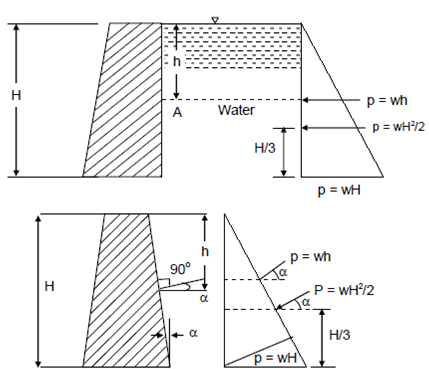Pressure on Retaining Walls Due To Liquids:
In Figure (a), the face of the wall in contact with the liquid is vertical, hence by the well known law of hydrostatics, the fluid pressure at any point A on the wall at a depth h is wh, where w is the density (or unit weight) of the liquid, and acts normal to the wall, (That is in the horizontal direction). A pressure diagram will be a triangle with zero pressure at top and a pressure wH at the bottom of the wall. The resultant force per unit length of wall will be the area of the pressure triangle, i.e. P= wH2/2 and it will act at the CG of the triangle, i.e. at a height H/3 from the base of the wall.

Figure
In Figure (b), the face of the wall is inclined at an angle α with the vertical; hence the pressure at a depth h is wh and acts normal to the wall, i.e. at an angle α with the horizontal. A pressure diagram is again triangular, or the resultant P= wH2/2 inclined at α along with the horizontal. The horizontal component of P will be wH2/2 cos α acting at depth H/3 from the bottom.